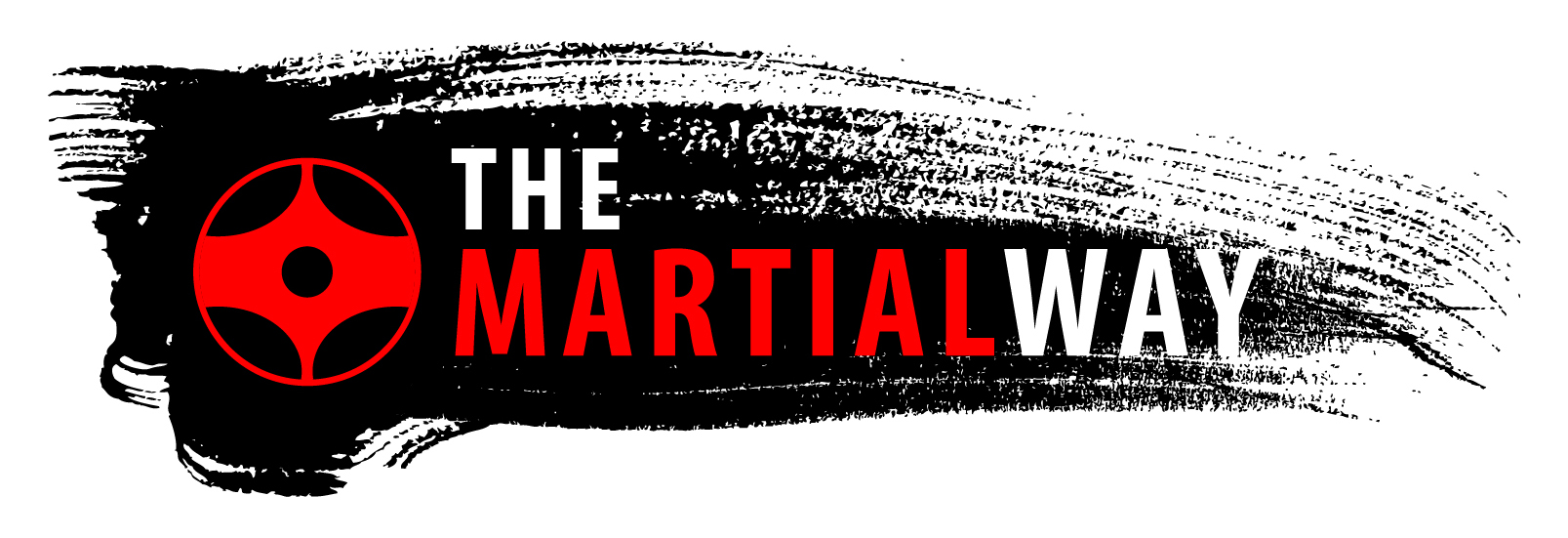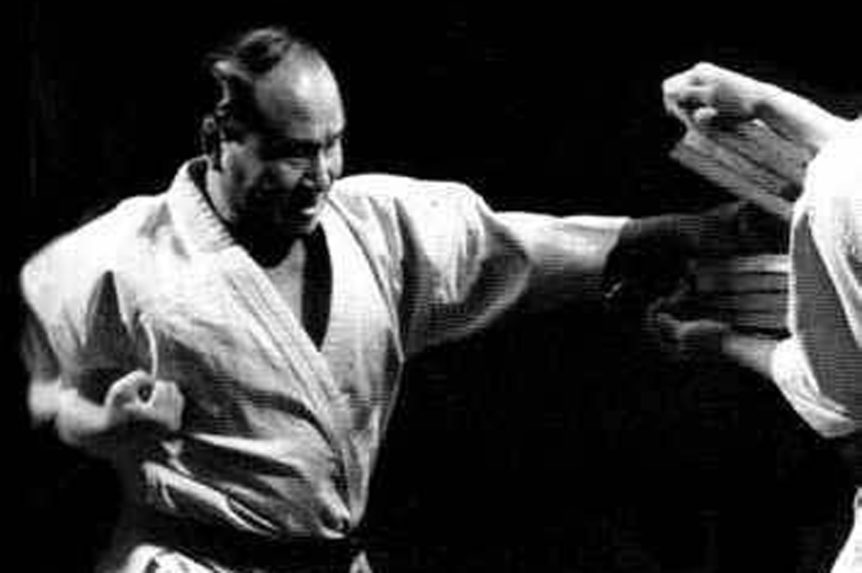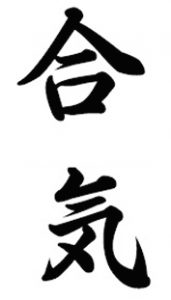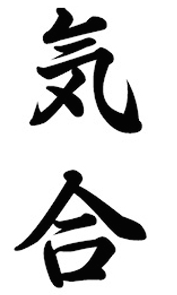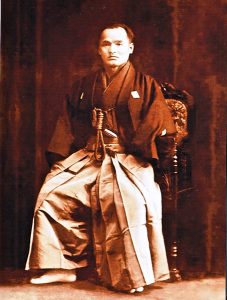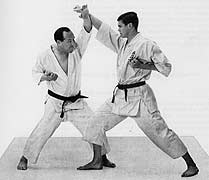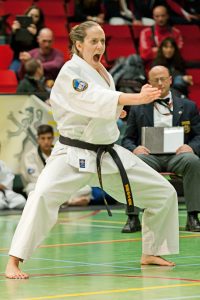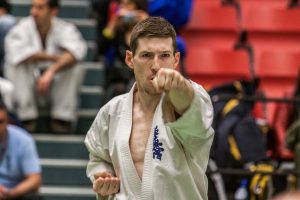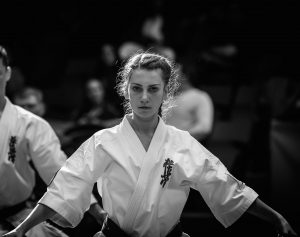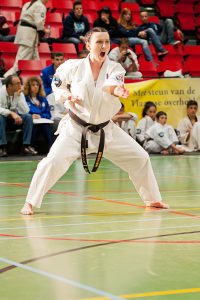Have you ever noticed if you reverse the first two characters of Aikido what you get? Kiai! And it’s no coincidence. These two characters, or words, are the combined words for Ki (life force), and Ai (meaning to blend or harmonize).
Aiki lends its name to various Japanese martial arts most notably Aikido and its parent art, Daito-ryu Aiki-jujutsu.
Ai-ki means to fit, join, or combine energy, or united life force and energy. When reversed Ki-Ai literally means to concentrate or focus your life force.
For our purpose I will be concentrating on the meaning and purpose of Kiai!
Kiai is known and described mostly in Western martial arts as a Spirit Shout, or Battle Cry. However, there are martial arts that use Kiai silently, like Kenjutsu (Japanese swordsmanship). They focus their spirit and energy into their blades and opponent.
Takeda Sōkaku (Oct 10, 1859 – Apr 25, 1943), founder of Daito-ryu Aiki-jujutsu, said, “Aiki is the art of defeating your opponent with a single glance.”
“Aiki is an impassive state of mind without a blind side, slackness, evil intention, or fear. There is no difference between aiki and ki-ai; however, if compared, when expressed dynamically aiki is called kiai, and when expressed statically, it is aiki”. From Jujutsu Kyoju-sho Ryu no Maki (Sōkaku 1913)
There is an old Okinawan story about a 19th century marital arts master who was challenged to a duel by another karate-ka.
They met at dawn in a field outside the village where they lived. Each man expected a fight to the death. As the master approached the field, the other man readied himself and assumed his fighting stance. The master, however, approached the scene standing relaxed with his hands at his sides. As the master came within fighting range, the challenger suddenly felt ill, and his knees nearly buckled. He quickly excused himself for a moment and sat down to regain his composure.
After several minutes, the master asked him if he was ready to get on with it. The man decided that he was and got up to take his stance, but as soon as he looked into the master’s calm face and firm gaze, he felt ill again and had to sit to keep from falling. “Sir, I withdraw my challenge and apologize”, he said. “I can see I am no match for you, and fighting would surely cost me my life.”
This story may sound far fetched but when the Kiai is developed to its purest and highest form it is much more than a yell, rather it is a force capable of completely crushing an enemy without throwing as much as a single blow. You may have had the experience yourself, or been on the receiving end. Think of Mike Tyson’s stare-down in his prime.
This phenomenon, I believe, is the concentrated will focused upon another. Directing your energy intensely, courageously and confidently.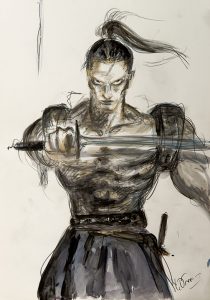
I experienced this first hand a few years ago when I met a retired Navy Seal, who had seen a lot of battle. His eye (as one was missing) was so focused and intense you could feel his energy. I would not ever want to mess with this man.
Christopher Caile, the founder and Editor-in-Chief of FightingArts.com, is a historian, writer and researcher on the martial arts and Japanese culture. A martial artist for over 40 years he holds a 6th degree black belt in Kyokushin Karate and is experienced in judo, aikido, daito-ryu, itto-ryu, boxing, and several Chinese arts. He is also a teacher of qi gong.
Caile tells the story from 1961, when he was was in Japan studying karate with Mas Oyama, the founder of Kyokushin Karate. After practice one evening Oyama and Caile made their way along a dirt street on the outskirts of Tokyo. They were heading toward a Korean restaurant, a favourite of Oyama’s where they often ate. It was getting dark and as they approached the restaurant in their path were several young men jostling and pushing each other. Suddenly the group seemed to lurch toward them. Oyama stopped and then uttered a short, powerful sound, something between a grunt and a soft shout. The youths froze. All action stopped, their bodies seemingly frozen, movement suspended as if energy had been sucked out of their limbs.
It seemed like an eternity, but it must have been only a second when the youths regained a little composure and turned. They met the wall of Oyama’s powerful look, thick eyebrows framing piercing eyes. Immediately they melted aside, then quickly disappeared down the street. No doubt Oyama’s powerful presence also had an effect; he was, a powerful looking, tank like man with a thick neck and massive chest accentuated with shoulders so wide they seemed out of proportion. Not a word had been said. “What was that?” Caile asked Oyama, dumbfounded. “Ahh, nothing,” Oyama replied in broken English, as he resumed walking toward the restaurant.
Sosai Mas Oyama himself talked about the importance of projecting your kiai, in a manner of speaking, as seen here in this clip of him teaching.
According to Forrest E. Morgan, in his book Living The Martial Way (a classic in martial arts philosophy), to develop Kiai takes years and you must practice the following:
Find Kokoro, or heart – Kokoro means indomitable spirit, and simply means to refuse to accept defeat. 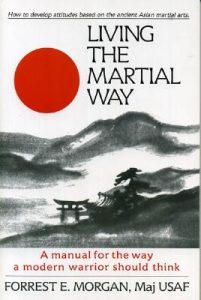 By being pushed, or pushing oneself, to the point of conquering your fears and any situation. Make never giving up a habit. Attack challenges put in front of you. These include not only the challenges on the mats, but the challenges of life.
By being pushed, or pushing oneself, to the point of conquering your fears and any situation. Make never giving up a habit. Attack challenges put in front of you. These include not only the challenges on the mats, but the challenges of life.
Haragei – Haragei literally means ‘Art of the stomach’. Almost like a ‘sixth sense’. Facial expressions, timing, sounds, and even silence convey messages, mask true emotions, and influence. Haragei is an important and powerful concept in Japanese communication. Even though it takes many years to learn, grasping Haragei offers you insights into that ‘sixth sense’, so you can begin to intuitively understand what your opponents are thinking and feeling.
It is not actually some mystical ability where you are able to by some mystical means determine if a person is going to attack or not, but rather a means cultivated through being perceptive and trusting your “gut” feeling.
Kokyu chikara – Breath power. Using your breathing to coordinate the contraction of your muscles so you can use your physical strength most effectively. Boxers are masters of this, as well as power lifters. To do this you have to relax and concentrate on your breath going into your lower abdomen hara (dantian). Of course the breath doesn’t actually go there, but its that focus of deep breathing that fills the lower part of the lungs.
Apply Kime – Kime (決め) means “spiritual power” and/or “focus,” describing the instantaneous tensing at the correct, usually last moment, during a technique. Kime is the focus that defines Kiai and probably the most important factor. You must start off loose and relaxed. When you throw a technique it should be fast and sharp until it reaches the target. At that last moment, you tense the body multiplying the energy with a kiai! Then immediately return to a relaxed state.
Your entire focus should be focused on the objective, with the level of commitment both physical and mental, and finally ending with the Spirit Shout that we are most familiar with when we talk about kiai. Your spirit focused intensely through your eyes.
Kata With the Utmost Seriousness – “Kata is the purest form of Kiai training [. . .] kata is the quintessential exercise in kime. It emphasizes coordinating and focusing physical energy in each technique, and teaches a student to concentrate his mental energy and focus it into the physical movement. Properly disciplined, traditional kata training even conditions the warrior to commit and focus his spirit through commanding the directions in which he points his eyes.
No, you can’t use a kata on someone who attacks you, nor will a properly executed, traditional form do much to win you trophies. But if you want to develop kiai, if you want to learn to destroy attackers utterly and completely, if you want to learn to defeat an enemy with a single glance, you’ll practice kata with utmost seriousness.” From Living the Martial Way ( Morgan 1992, P. 123)
Sensei Steve Fogarasi , Canadian Representative of the International Federation of Karate (Kyokushin), gave a great explanation on how to do the battle cry, that I wrote about in another article… see here =>>>
There are no specific sounds involved. They are unique to the individual practitioner. Traditional Japanese Dojo generally use single syllables beginning with a vowel. You don’t actually say the word “kiai”.
In Japanese martial arts, the kiai was traditionally used to startle an opponent, intimidate, express confidence, or express victory. In kendo, for example, a point is only given by the Shinpan (referees) if the hit is accompanied by a strong, convincing kiai.
As Sensei Fogarasi explained to us, we need to focus on where the sound is generated. The kiai should start in the Hara . This means the yell should come from the belly, not the throat. The easiest way to know if you are doing correctly is to stand with your hands at your sides, push hard on both sides of your belly (below your ribs) with the inner ridges of your hands (the space between your thumb and index finger), then cough. Feel that? That is where your kiai muscle is located, not the throat.
For myself Kiai has meant a lot. When things are going tough for me, outside of the dojo, I will close my eyes and think of how the kiai feels. How it resonates inside my body. I really step into the feeling, and it changes me. Suddenly I feel more confident and able to take on whatever is in front of me. I feel focused and determined.
This is once again the lessons that are imparted upon me by a great teacher that are totally useable in the real world. Karate training is about so much more than fighting, kata and exercise. It gives you tools that are applicable to every facet of your life. Face any challenge or obstacle in front of you with the spirit of Kiai!
OSU!
